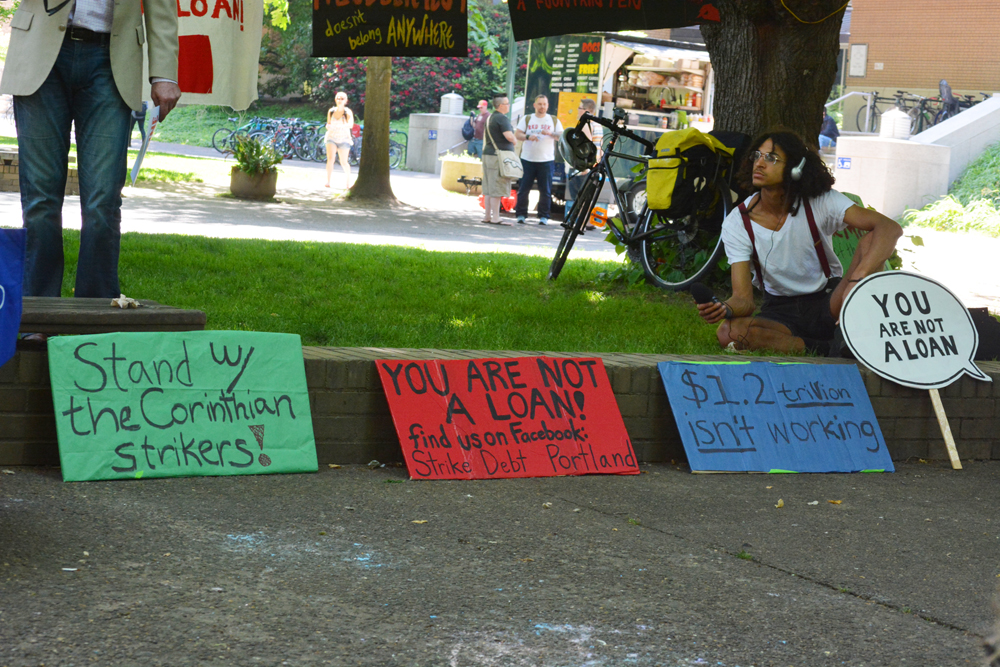We could have walked there by now. I once found these apt words scrawled inside the shelter at a streetcar stop in Southwest Portland. It may also have been one of the many instances that I looked up at the arrival times only to see the five turn into an eight, then to a six and finally up to an 11.
Streetcar leaves something to be desired
We could have walked there by now.
I once found these apt words scrawled inside the shelter at a streetcar stop in Southwest Portland. It may also have been one of the many instances that I looked up at the arrival times only to see the five turn into an eight, then to a six and finally up to an 11.
It is not a rare sight at a Portland Streetcar stop to see someone walk up to the shelter, glance at the arrival time and then start off walking in the direction the car would have taken them.
Now don’t get me wrong, I believe the streetcar has its uses, but I also think it needs some work.
The Portland Streetcar boasts about eight miles of track. A one-way trip on this track (from Southwest Bond and Lane to Legacy Good Samaritan Hospital) has 25 stops. That seems like an awful lot of stops for a four-mile trip.
The TriMet Trip Planner informs me that this journey will take about 40 minutes–about the same time it takes the Red Line MAX to go from downtown to the Portland Airport.
The car also has to make stops for traffic and red lights, something the MAX has little problem with, especially once it gets out of downtown Portland.
There is also the issue of frequency and scheduling conflicts. The streetcar arrives every 15 minutes or so for the better part of the day. This is the same frequency as the MAX, which, in some cases, is going three times further.
Later at night the streetcar only comes every 30 minutes or so. It’s also difficult to collect data on arrival times and frequency because of discrepancies between the trip planner, schedules and electronic arrival postings at the stop itself.
During the week, the streetcar only runs until about 11 p.m. Saturday that time is extended by about 10 minutes and on Sunday it stops running before 10 p.m. The number 15 bus, on the other hand, which stops right at the same spot on 23rd Avenue and also goes downtown, runs until a little after 1 a.m. Often I have found myself waiting for the final streetcar back to PSU on a weeknight only to find that it doesn’t show up at all.
It is not rare to discover that the times posted online or in printed schedules are far off from the actual arrival of the car. The fact that the streetcar has to follow traffic, is subject to light changes, and takes much longer to speed up and slow down than any bus or car does not help matters of expediency.
It lacks the freedom to move around stalled cars, intense traffic or other similar annoyances. Of course the MAX can’t do this either, but it gets its own lane and is even in sync with traffic lights.
Now the city of Portland wants to extend the streetcar to the east side of the river, with possible extensions to OMSI and Lloyd Center. The latter location is already served, quite well I might add, by two MAX lines.
This money should be going to improve the system that already exists, not adding to it. Adding more trains and employees to increase the frequency of arrival times or extending service hours are just a couple of things that this money could be used to make happen.
Or what about bike rental stations that have been adopted by so many European cities? I think this would be a great addition to our transportation infrastructure and would certainly be less expensive to implement.
The streetcar isn’t bad by any means; it’s just inefficient and often annoying. For short trips, the streetcar is generally useless. Coupled with arrival times and actual distance traveled, one could walk in about the same time, if not faster–and I don’t think a 20-minute walk would have adverse effects on many people.
For long trips, buses service many of the same locations and, in my opinion, the buses do it better. It’s also more likely that fares (outside fareless square) will actually be paid on buses–fares that are currently going to fund the inefficient streetcar and its new route. It would behoove TriMet to use the money to invest in more bus lines and the new MAX lines, which have continually proven their efficiency.
For the most part, the city and TriMet need to work on improving what it already has before it decides to make this inefficient track even longer.



